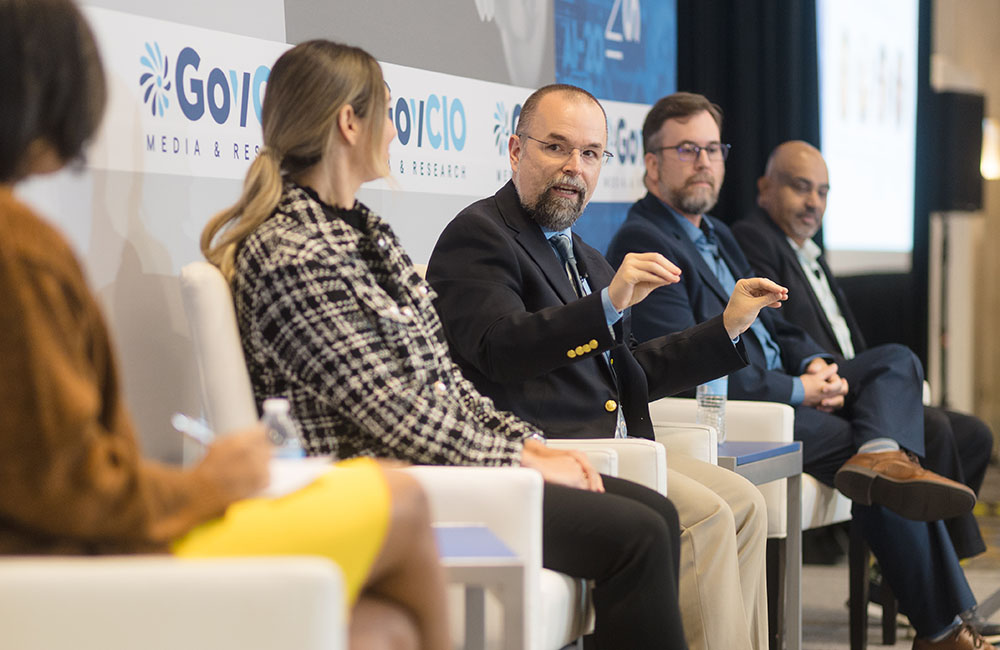Strong CFO Relationship Key to Modernizing IT Systems on a Budget
The Department of Energy and the Social Security Administration look for strategic ways to modernize technical frameworks while operating on limited resources.

Staying ahead of the technology curve can be challenging for many agencies, especially when they’re operating on limited resources. However, there are some steps organizations can take to modernize their IT systems without going over budget.
The Department of Energy and the Social Security Administration believe it’s important to have a strategy when trying to upgrade back-end processes and simplify your workflows. Maintaining a good relationship with the chief financial officer is also vital to helping agencies achieve their IT modernization goals.
LeAnn Oliver, director of the Office of Corporate Business Systems with the Office of the Chief Financial Officer at Energy, said you have to be creative when looking at what you want to pursue for resources. Not only do you have to find areas within your agency where you can share the costs, but also you have to look at the situation strategically. It’s important to have a good vision of where you’re going with your overall systems.
“I get back to the strategy, though, because you’re going to have to make tradeoffs no matter what you’re doing. And so, if you have a really clear idea of where you’re going, the funds that you do have, you can put in the biggest bang for your buck area. But I think in order to do that, you’ve got to really figure out what your tradeoffs are,” Oliver said during ATARC’s 2023 Federal IT Modernization Summit. Patrick Newbold, assistant deputy commissioner and deputy CIO at SSA, also believes it’s critical to have a good working relationship with your CFO.
“At our agency, the CFO which is charged with managing will have over half our active commissioning my budget and CIO statute, a law that has the responsibility to manage the resources, It takes those two together and be part of the C suite to ensure that we are again aligning those resources, that limited resources that we have to what matters the most,” Newbold said.
You should be able to communicate what you need by putting it in terms that they will understand, Oliver added.
“It needs to make sense from a technical perspective. It needs to make sense in terms of how it fits in with the rest of the department. It just it just needs to be well thought out and supportable to people who may or may not have technical backgrounds,” Oliver said. “If your CFO you know isn’t a techie, you’re going to help yourself a lot by making sure that you’re talking to them in the appropriate terms.”
While money is essential to modernizing IT systems, knowing when to modernize is equally as important. Newbold said he looks at several types of risks including human risk as a deciding factor on when it’s time to upgrade systems.
“This is really a big one at SSA, we have some COBOL, we have mainframe. And those skill sets are retiring, quite frankly.” Newbold said. “We have to look at the new and as if that’s going be a factor, we have to plan for that. We have to address that. And a lot of times that means we need to look at modernizing the system.”
Editor’s Note: A previous version of this story misattributed a quote to SSA Deputy CIO Patrick Newbold. The error has been corrected.
This is a carousel with manually rotating slides. Use Next and Previous buttons to navigate or jump to a slide with the slide dots
-

AI Foundations Driving Government Efficiency
Federal agencies are modernizing systems, managing risk and building trust to scale responsible AI and drive government efficiency.
43m watch -

Inside DOD’s Push to Grow the Cyber Workforce Through Academia
Diba Hadi gives her first interview since becoming principal director of the DOD’s Cyber Academic Engagement Office.
15m listen -

Agencies Tackle Infrastructure Challenges to Drive AI Adoption
Federal agencies are rethinking data strategies and IT modernization to drive mission impact and operational efficiency as new presidential directives guide next steps.
5m read Partner Content -

Generative AI Demands Federal Workforce Readiness, Officials Say
NASA and DOI outline new generative AI use cases and stress that successful AI adoption depends on strong change management.
6m read -

The Next AI Wave Requires Stronger Cyber Defenses, Data Management
IT officials warn of new vulnerabilities posed by AI as agencies continue to leverage the tech to boost operational efficiency.
5m read -

Federal CIOs Push for ROI-Focused Modernization to Advance Mission Goals
CIOs focus on return on investment, data governance and application modernization to drive mission outcomes as agencies adopt new tech tools.
4m read -

Fed Efficiency Drive Includes Code-Sharing Law, Metahumans
By reusing existing code instead of rewriting it, agencies could dramatically cut costs under the soon-to-be-enacted SHARE IT Act.
5m read -

Agencies Push Data-Driven Acquisition Reforms to Boost Efficiency
New initiatives aim to increase visibility of agency spending, improve data quality and create avenues to deploy solutions across government.
5m read -

Data Transparency Essential to Government Reform, Rep. Sessions Says
Co-Chair of the Congressional DOGE Caucus Rep. Pete Sessions calls for data sharing and partnerships to reduce waste and improve efficiency.
5m read -

DOD Turns to Skills-Based Hiring to Build Next-Gen Cyber Workforce
Mark Gorak discusses DOD’s efforts to build a diverse cyber workforce, including skills-based hiring and partnerships with over 480 schools.
20m listen -

Trump Executive Order Boosts HBCUs Role in Building Federal Tech Workforce
The executive order empowers HBCUs to develop tech talent pipelines and expand access to federal workforce opportunities.
3m read -

Navy Memo Maps Tech Priorities for the Future Fight
Acting CTO’s memo outlines critical investment areas, from AI and quantum to cyber and space, as part of an accelerated modernization push.
5m read




